Ethereum Name Service (ENS): How to Search and Explore ENS Domains
Learn how the Ethereum Name Service (ENS) transforms complex crypto addresses into readable names. Explore ENS lookups, onchain activity, and usage across Ethereum.
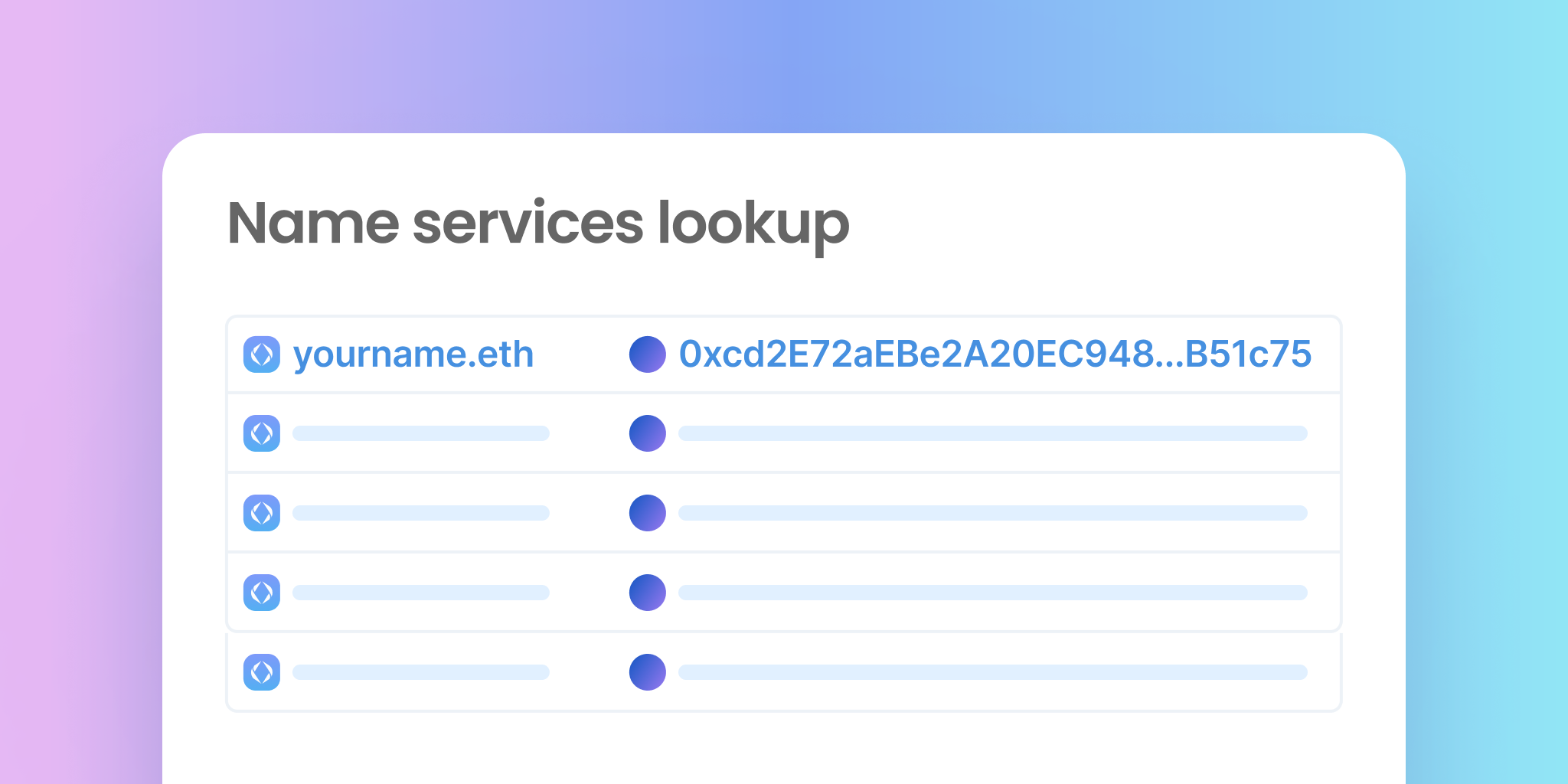
The Ethereum Name Service (ENS) is a distributed, open-source naming protocol built on the Ethereum blockchain. It simplifies user experience by turning machine-readable IDs like Ethereum addresses, crypto addresses, content hashes, and metadata into names that people can actually read and understand. Similar to traditional Domain Name Service (DNS), ENS enables the use of these names as actual domain names on the blockchain.
Since its launch in 2017, ENS has evolved from a simple naming protocol into a critical infrastructure with over 2 million names registered onchain, making it one of the most successful identity projects in the crypto ecosystem. In this piece, we’ll explore why they’re useful, how they are active on different chains, and show you how to explore them on Blockscout.
Why Do We Need Blockchain Naming Services?
For years, blockchain protocols have prioritized improving user experience, and ENS is a major step forward in that direction. ENS replaces long, complex hexadecimal wallet addresses with simple, human-readable names.
Instead of copying and pasting a string like 0x8f3a...e1b9, users can simply type “alice.eth.” This not only makes transactions more intuitive but also reduces the risk of errors and costly mistakes when sending or receiving cryptocurrency.
ENS names can also act as portable identities across the decentralized web, allowing users to link their social media handles, avatars, websites, and multiple cryptocurrency addresses to a single name. Unlike traditional domain names, ENS domains are managed by the ENS DAO, a decentralized autonomous organization run by the community. This structure gives users control without the need for centralized intermediaries.
How ENS Works: The Technical Architecture
ENS operates through two primary components: the ENS Registry, a smart contract that records all domain names, their owners, associated resolvers, and time-to-live data; and Resolvers, smart contracts that translate ENS names into their respective data, such as wallet addresses or website content.
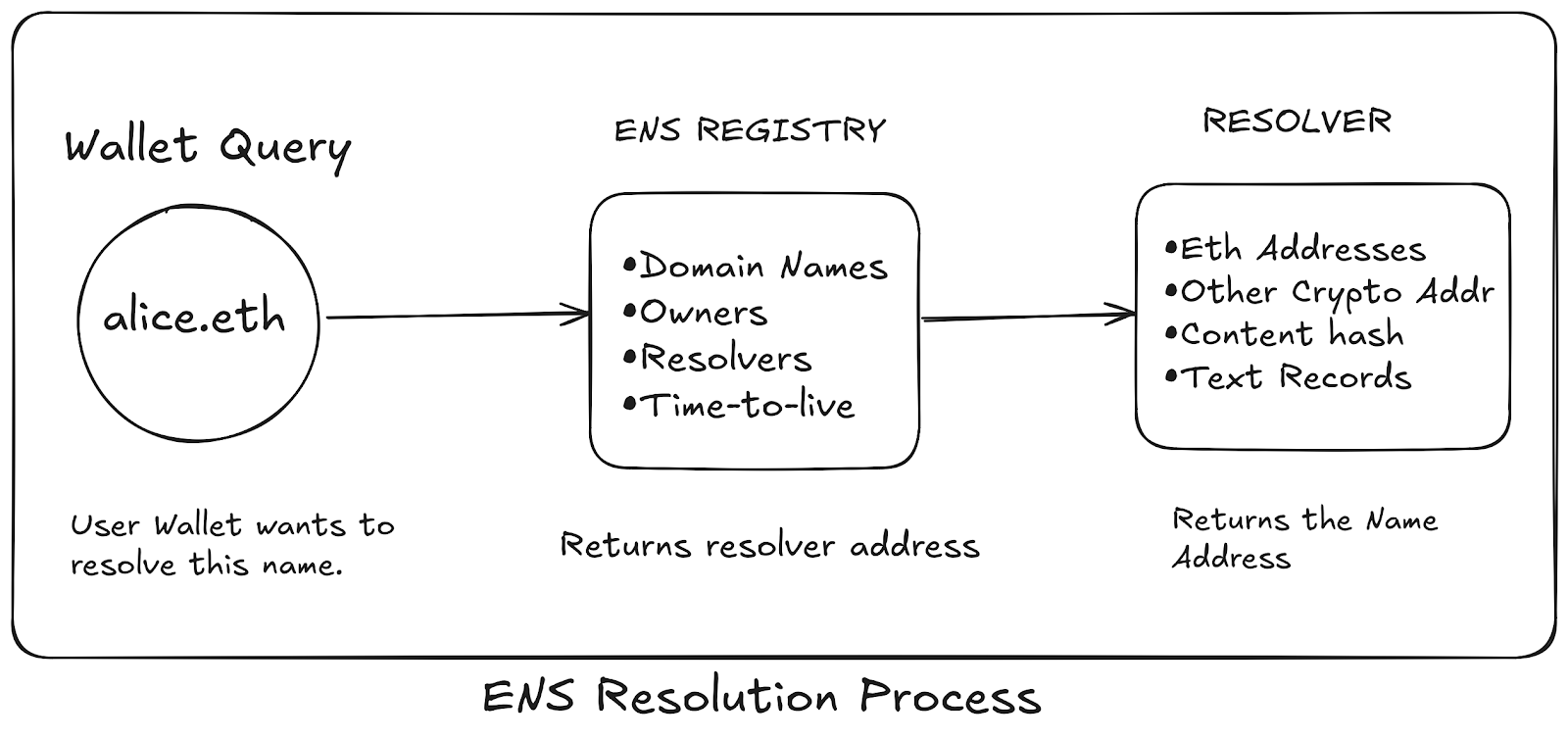
When you want to send cryptocurrency to an ENS name using a wallet or Dapp, the wallet or Dapp performs a query to retrieve the address associated with that ENS name through the specified process above.
The hierarchical structure of the ENS protocol allows domain owners to create unlimited subdomains. For example, if you own "company.eth," you can create "payments.company.eth, "nft.company.eth," or "team.company.eth" for different purposes.
Moving to Layer 2 with Namechain
One of the most significant developments in ENS's roadmap is ENSv2, a comprehensive upgrade that migrates its core functionalities to Layer 2 networks. Currently, ENS interactions on the Ethereum mainnet can cost between five to twenty dollars per transaction due to high gas fees, creating a barrier for mainstream adoption.
ENS Labs is building Namechain, its own Layer 2 network using zero-knowledge rollup technology, expected to launch by the end of 2025. This technology will process transactions off the main Ethereum network while maintaining full Ethereum security at a fraction of the cost.
ENS Beyond Ethereum & Naming Services Across Different Blockchains
The ENS protocol is not exclusive to the Ethereum blockchain. While ENS resolution begins on the mainnet and the ENS registry resides there, the actual data, such as addresses and records, can be stored on various other Layer 1 and Layer 2 chains, as well as offchain. This is made possible through EIP 3668 CCIP-Read (Cross-Chain Interoperability Protocol), a mechanism that allows a contract to retrieve external data.
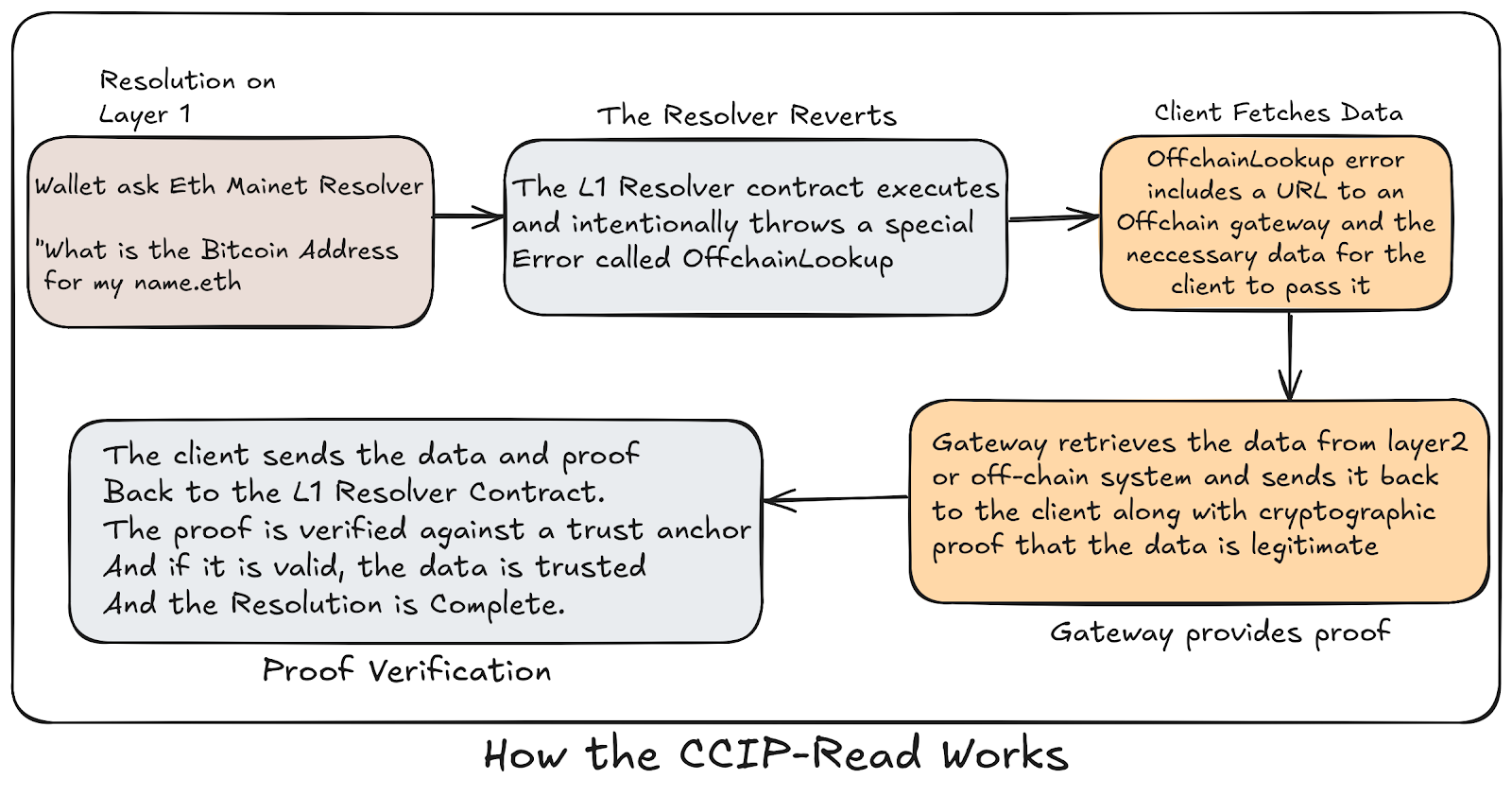
When the layer 1 resolver receives a query, it intentionally throws a special error called OffchainLookup. This error includes a URL to an off-chain gateway (like Api.coinbase.com) and some data (such as "Data to send: 0x123..."). The Client, which can be a wallet or Dapp, takes this error and the data and makes an HTTP request to the gateway. The gateway then retrieves the data from the Layer 2 or off-chain system and sends it back to the Client.
How to Explore ENS Names on Blockscout
Blockscout has ENS Resolution integrated, allowing you to see the addresses associated with each name with just one click. The explorer automatically resolves these names and displays the corresponding addresses.
Simply paste the Domain name in the search bar and click the result to see details on the address page.
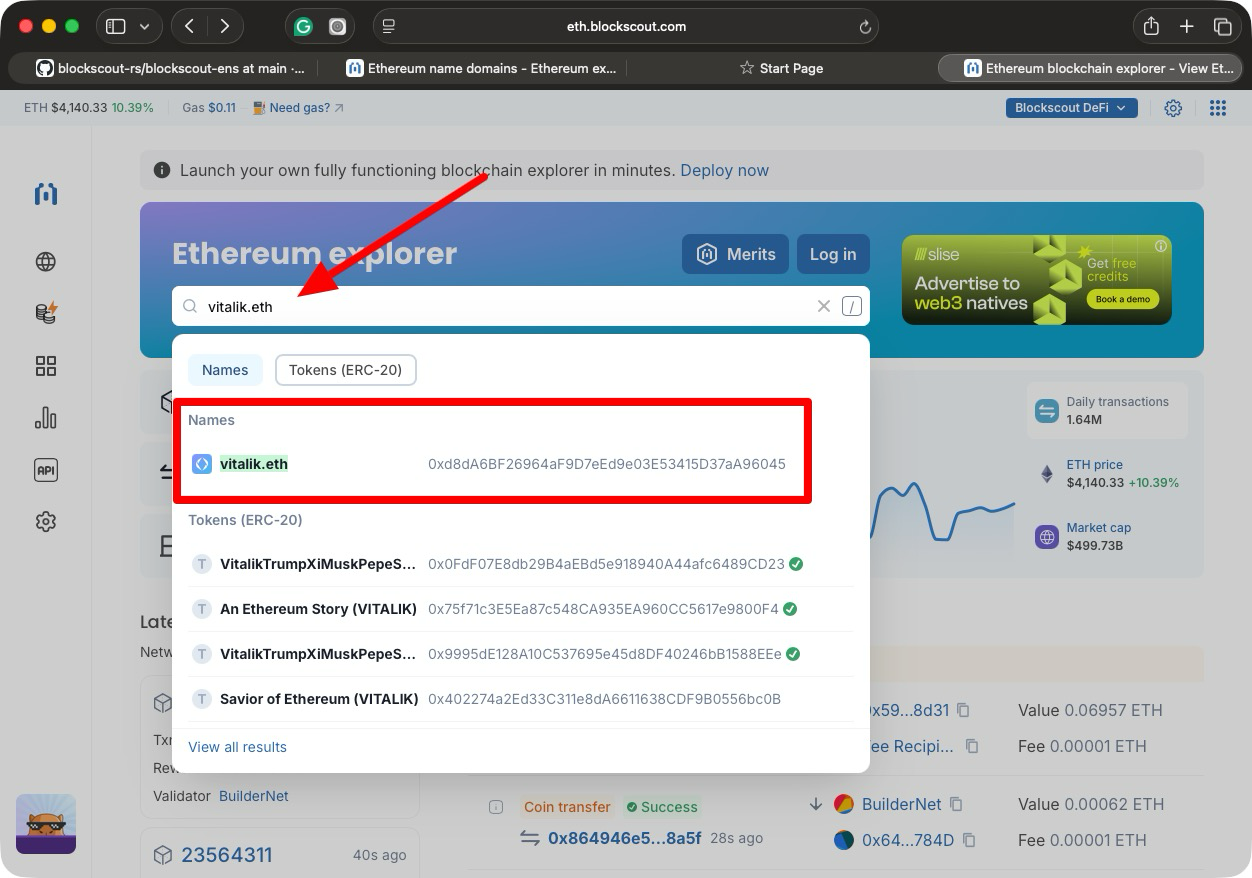
You can also make use of the dedicated Domain Name lookup page to see more details about the domain, including when it was registered and when it expires.
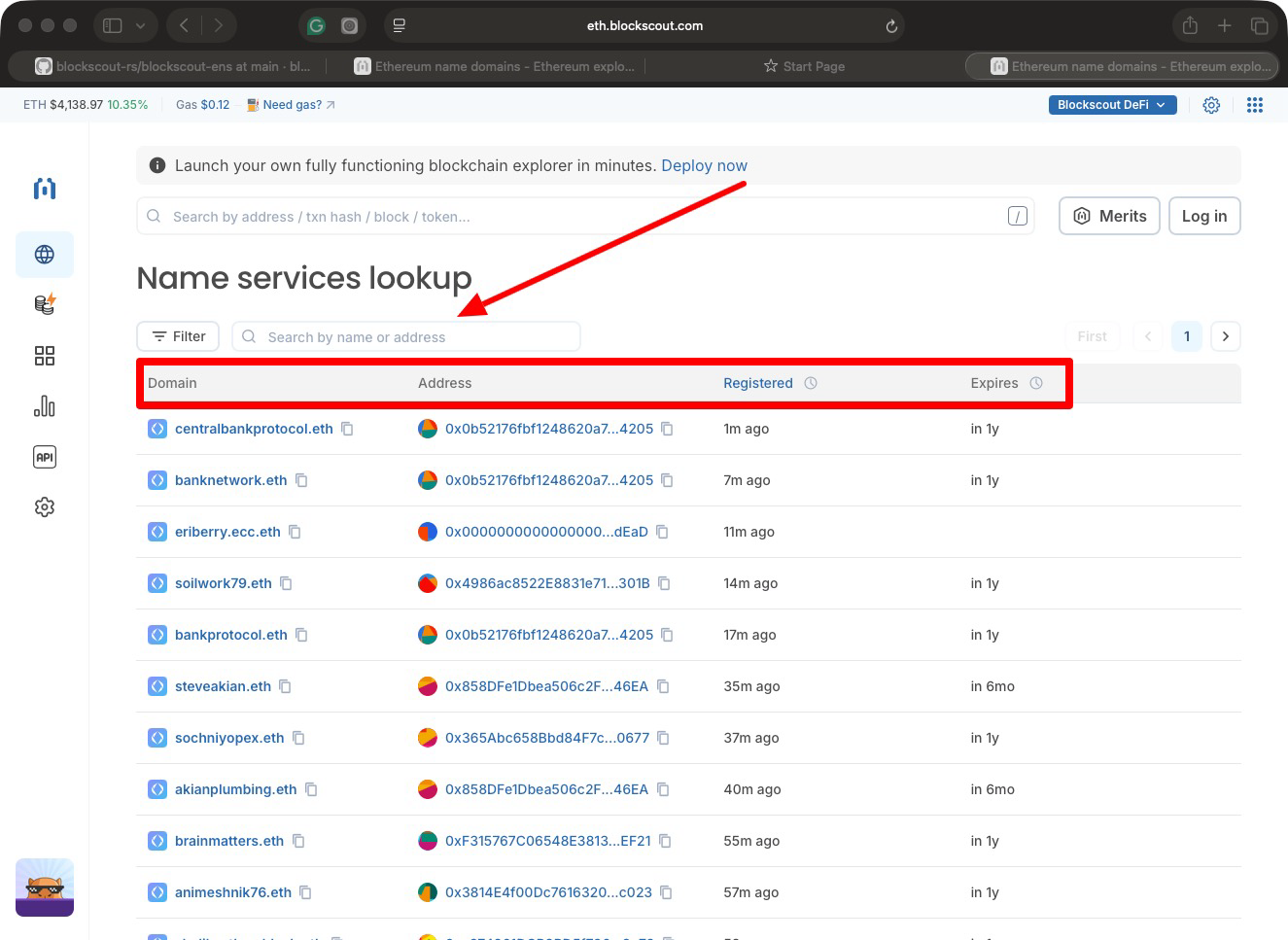
Simply type the name in the search bar and click on the name.
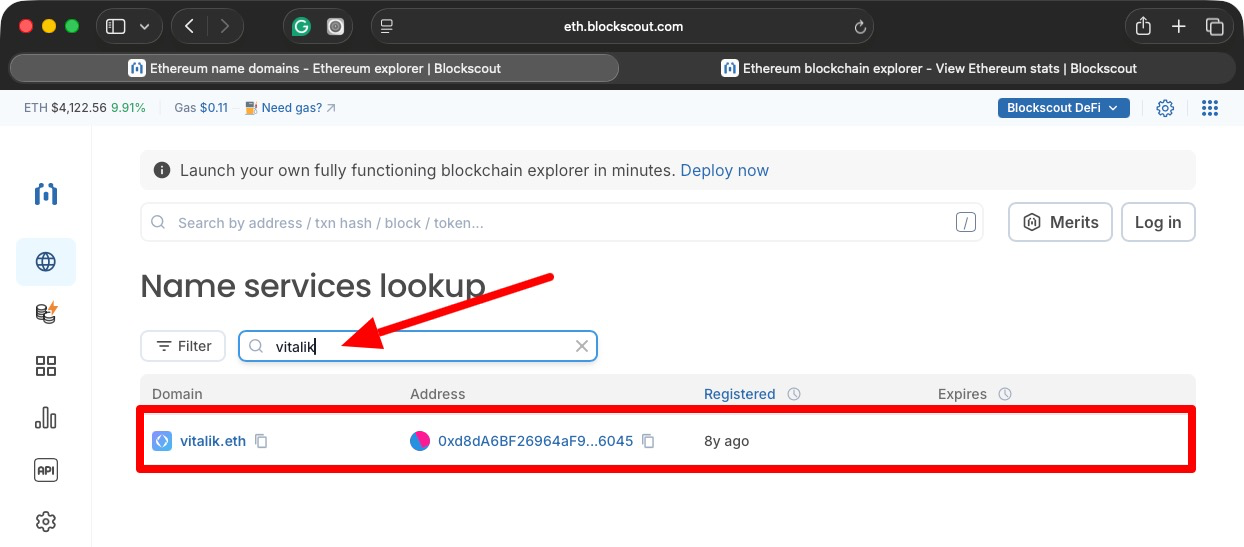
From here, you can see all the details on the domain and even the history of transactions.
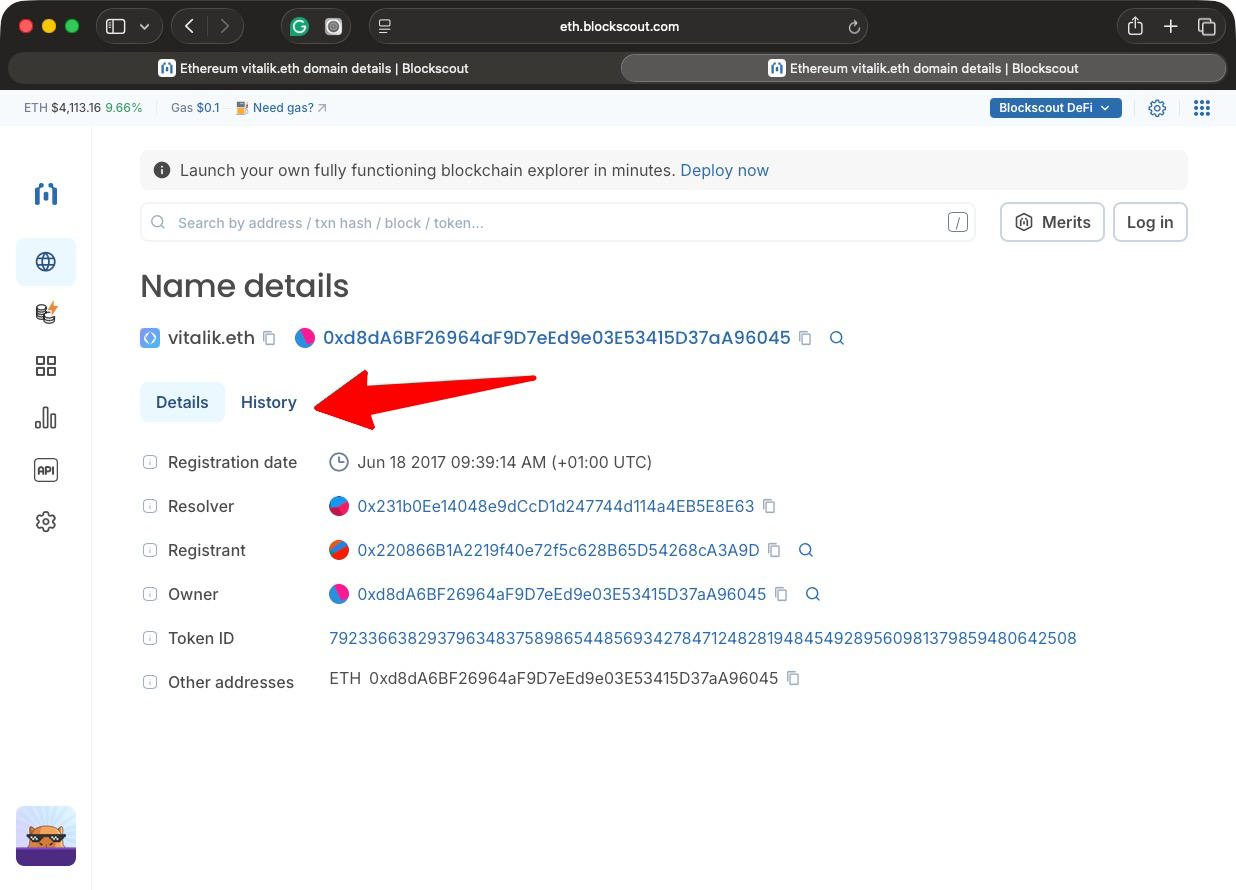
Conclusion
Blockchain naming services are a vital part of the blockchain ecosystem, changing lengthy addresses into easy-to-remember names. While ENS pioneered this space on Ethereum and continues leading with its upcoming Layer 2 expansion, a vibrant ecosystem of naming services has emerged across different blockchains, each adapting the concept to its specific network's strengths.
The trend is clear: as blockchain technology matures, these naming services will become as fundamental to Web3 as DNS is to the traditional internet, creating a more accessible, user-friendly decentralized web for everyone.

